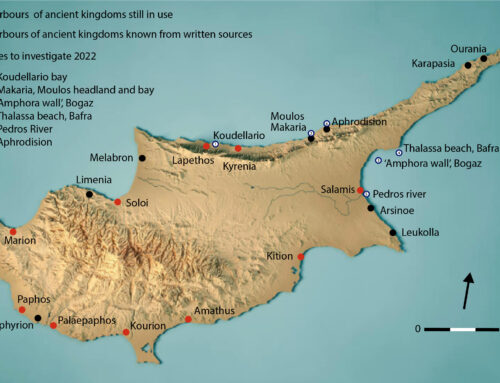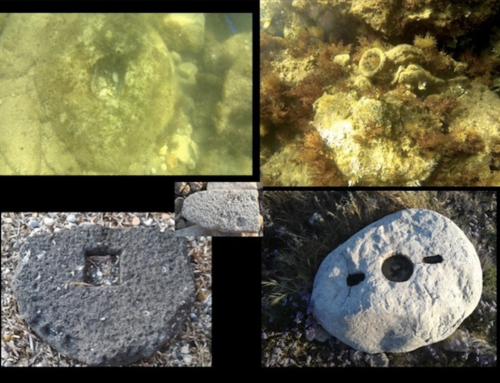Maritime adaptation in Levantine Prehistory; endangered cultural resources off the Carmel coast – 2014
Ehud Galili
University of Haifa Zinman Institute of Archaeology, and Israel Antiquities Authority
During the last five decades, seven submerged villages dated to the Neolithic period have been discovered on the seabed along the Carmel coast, Israel. Results of investigations at these submerged sites shed light on the economy, material culture and lifestyle as well as on the subsistence and diet of the coastal Neolithic entities of the South Levant. These investigations resulted in better understanding of how the ancient populations coped with environmental changes, sea-level rise, and the retreat of the shoreline landward, the flooding of the coastal plain and groundwater salinization.
The submerged site of Kfar Samir is located south of Haifa, 0.5 to 5 below present-day sea level. Excavations and surveys revealed paved floors, olive-oil extraction installations and several water- wells constructed of alternating layers of wooden branches and stones. Additionally, round pits containing plant remains (mainly broken olive stones and pulp) were found together with wooden bowls, fragments of woven reeds mat, and stone basins.
In October 2014, an underwater excavation of prehistoric water well was conducted at the Kfar Samir site, off Haifa south coast (Excavation license: G-6/2014-Israel Antiquities Authority). The excavation was a product of international collaboration funded by the Honor Frost Foundation. It involved 25 researchers and students from Israel and Scotland. A total of 68 dives on the site were carried out under the supervision of A. Yurman and M. Bachar of the Maritime Workshop of the Leon Recanati Institute for Maritime Studies. The excavation and the research were carried out by Ehud Galili, Deborah Cvikel, Jonathan Benjamin, John McCarthy, Dafna Langgut, Mark Cavanagh, Yuval Sapir and Mina Weinstein-Evron.
The Kfar Samir site contributes to the discussion on past and future human response to sea-level rise. Ultimately, settlements were abandoned and inundated completely. However, evidence from the Carmel coast demonstrates that there were attempts to cope with the changing environmental conditions; Neolithic water wells were re-floored to cope with salinization, coastal protections were built and eventually, whole settlements were evacuated and new ones were established in higher grounds.

Divers drawing and measuring the well



